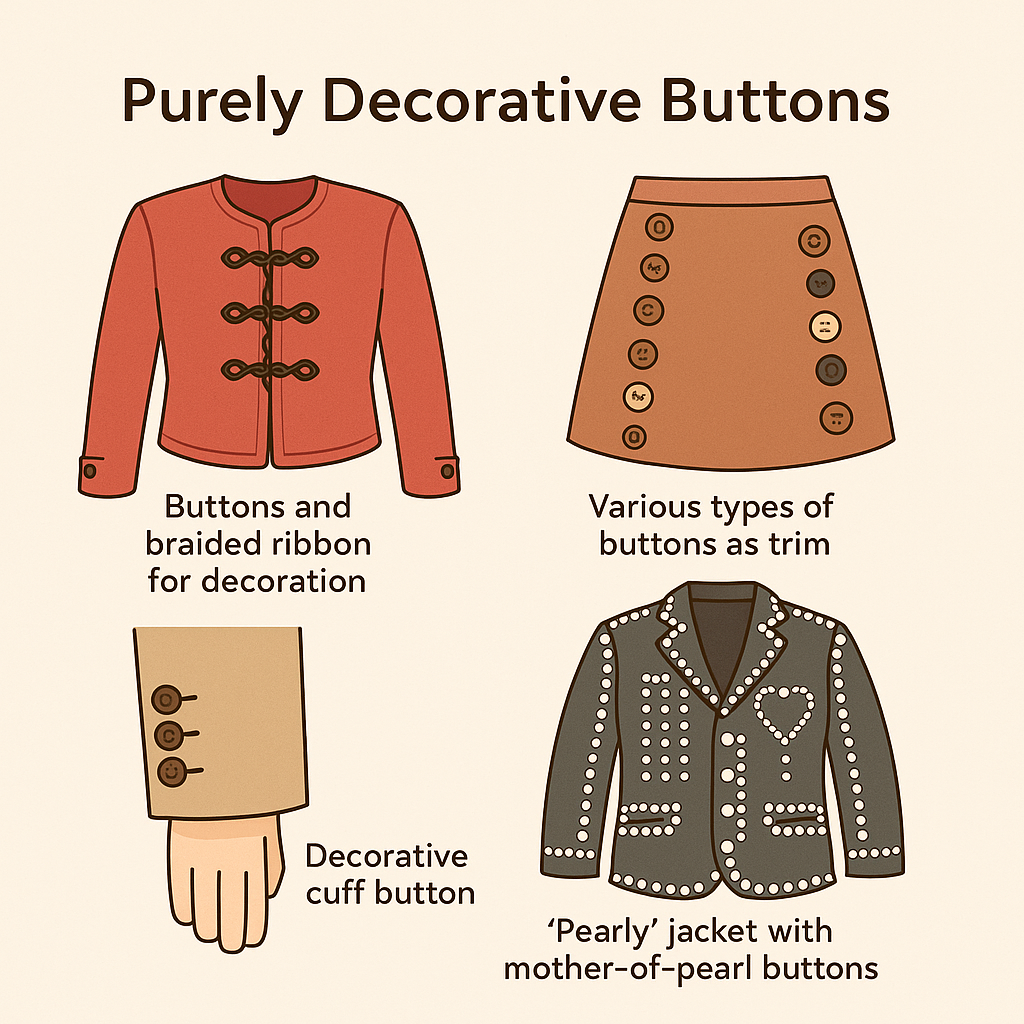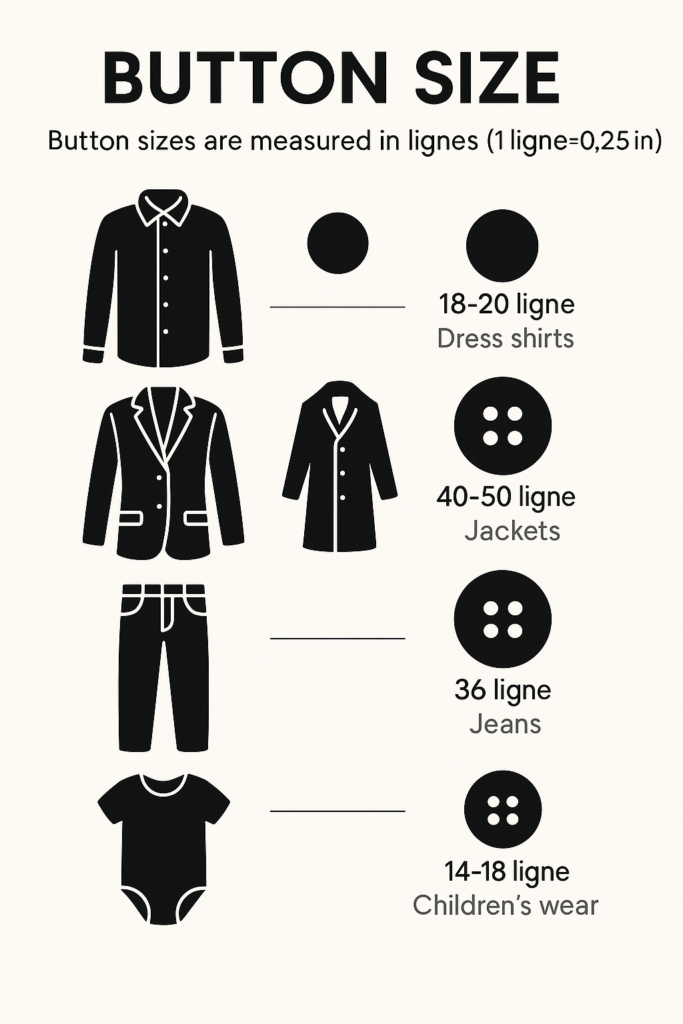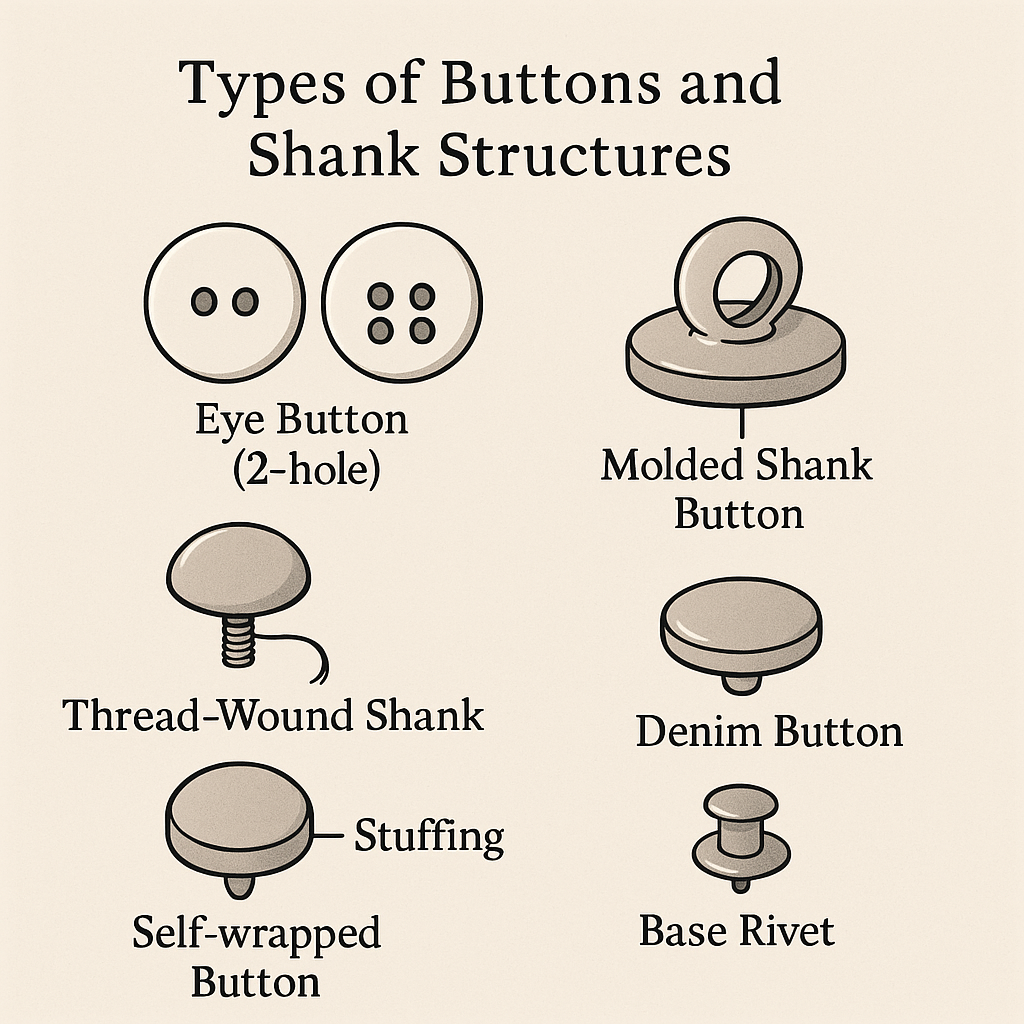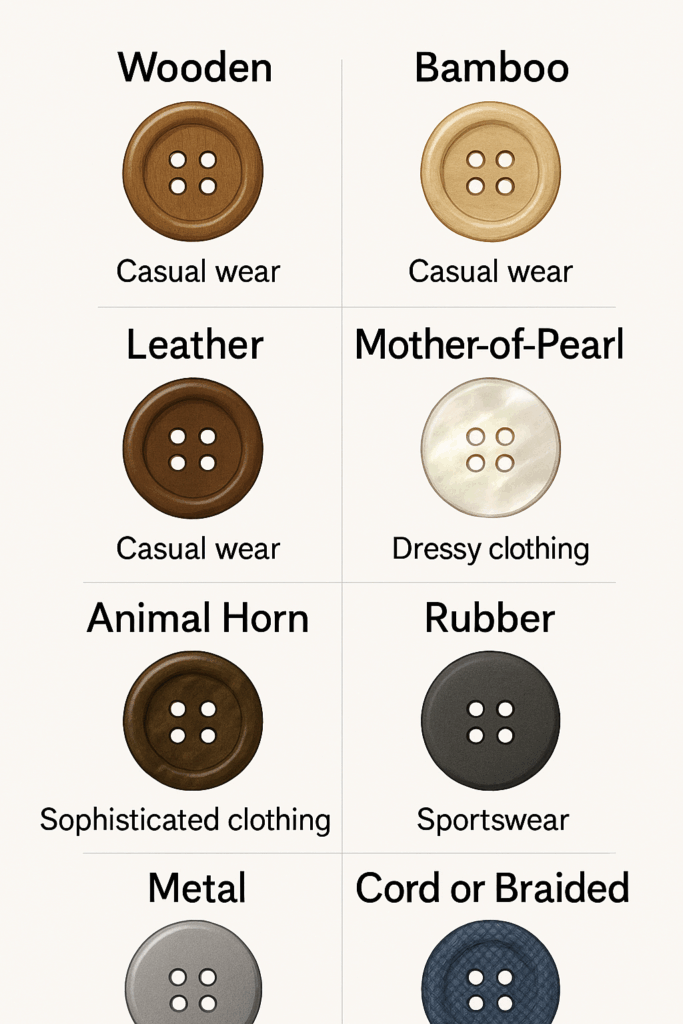✨ Purely Decorative Buttons: Functionless Beauty in Fashion Design
Buttons don’t always serve a functional role — they can also be powerful visual elements. From embellished cuffs to historical costumes, purely decorative buttons add texture, cultural depth, and sophistication to modern and traditional garments alike.
In this article, we explore the use of decorative buttons in fashion, their applications in contemporary and historical clothing, and how designers integrate them into creative trims and accents.
🔹 What Are Decorative Buttons?
Decorative buttons are buttons used not for fastening, but purely for visual enhancement. They may be sewn onto garments to mimic structure, add symmetry, or introduce embellishment.
Unlike functional buttons:
- They don’t interact with buttonholes or loops
- They are often stitched directly onto the surface
- They serve aesthetic or symbolic purposes
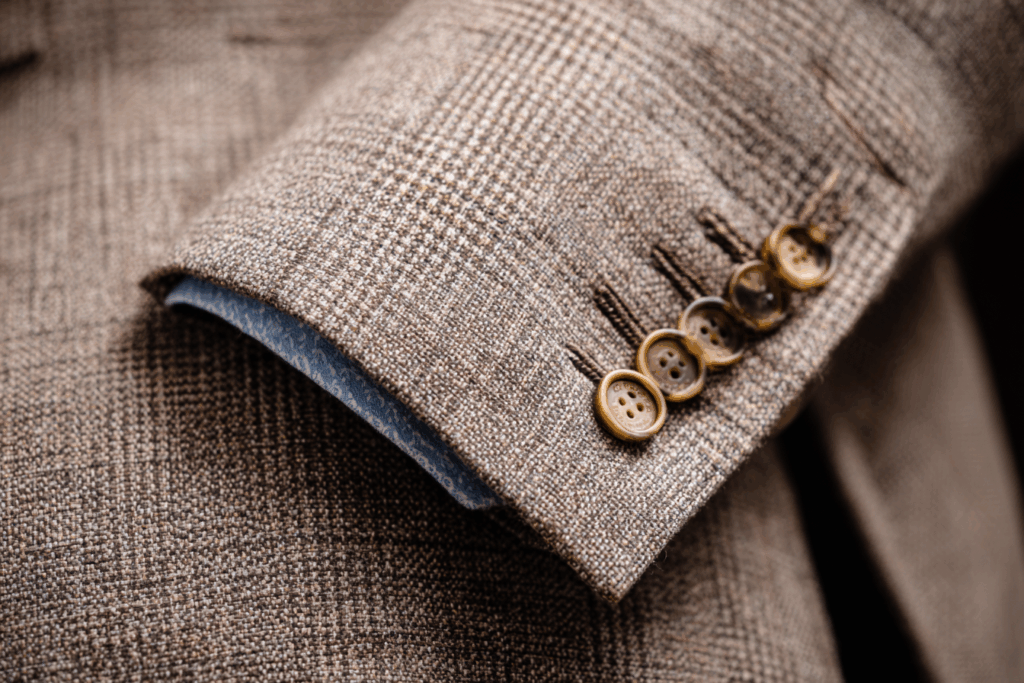
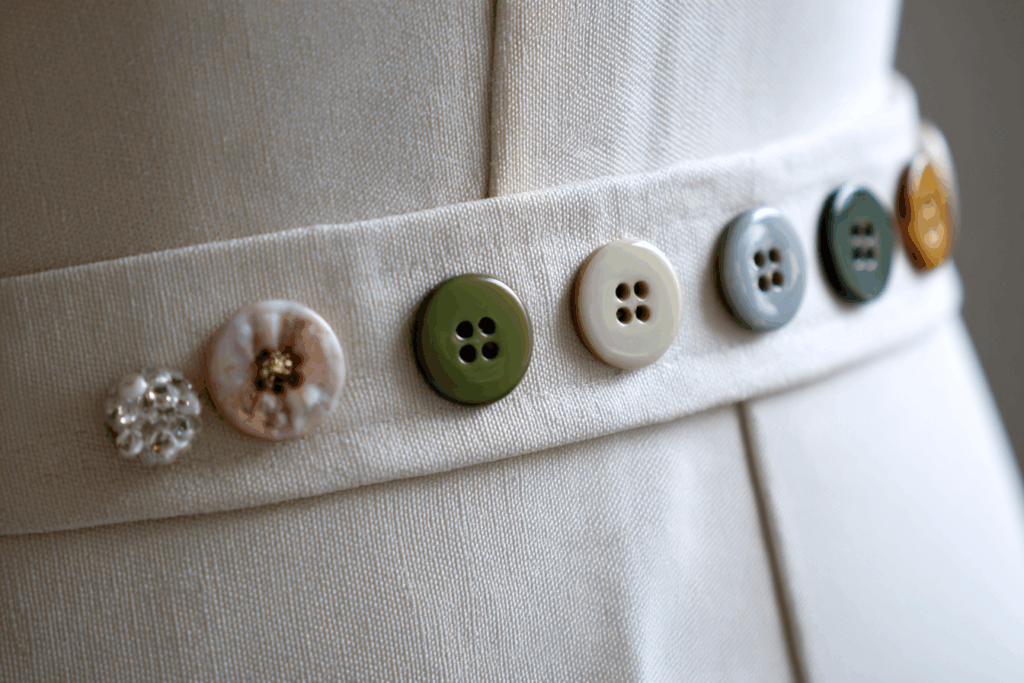
🔸 Common Applications of Decorative Buttons
1. Cuffs & Front Panels
- Buttons paired with braided ribbons, zippers, or hidden snaps
- Appear on:
- Faux cuffs on blazers
- Faux plackets on jackets
- Zippered garments that imitate button-down designs
🧵 These designs maintain the appearance of traditional closures while using faster mechanisms.
2. Skirt & Dress Trims
- Random or structured rows of buttons used as visual borders
- Mixed materials: wood, enamel, pearl, or metallic buttons
- Often added post-production for contrast
🎯 Designers may use different button styles for bold, artsy embellishment.
3. Cultural and Ceremonial Costumes
One of the most iconic examples is the London Pearly Kings and Queens’ costumes, decorated with:
- Hundreds of mother-of-pearl buttons
- Forming symbols, family crests, and patterns
- Traditionally hand-sewn onto black garments
💡 These costumes are worn for parades, charity work, and cultural pride in London’s working-class communities.
🔹 Advantages of Using Decorative Buttons
| Advantage | Explanation |
|---|---|
| Adds Visual Interest | Buttons act as texture or points of focus |
| Mimics Structure | Gives illusion of a traditional placket or closure |
| Celebrates Tradition | Incorporates heritage elements in modern fashion |
| Enhances Branding | Signature decorative elements can become brand identifiers |
| Cost-Efficient Embellishment | More affordable than embroidery or beading |
🎨 Material Choices for Decorative Buttons
- Mother-of-Pearl: Luxurious, shiny, used in cultural and ceremonial wear
- Plastic: Lightweight, versatile, easy to dye and mold
- Metallic: Adds a bold or military-inspired touch
- Wood/Bamboo: Earthy aesthetics for casual or eco-themed fashion
- Covered Buttons: Fabric-covered to match or contrast with the base garment
🧵 Design Tip: Where to Place Decorative Buttons
| Placement Zone | Suggested Use |
|---|---|
| Cuffs | Faux buttons for traditional or high-end aesthetic |
| Skirt hemline | As trim or accent for asymmetry or color contrast |
| Collar edges | Visual balance or playfulness |
| Jacket fronts | Mixed with braid, used alongside zippers or hooks |
| Back seams | Illusion of button-down detail in dresses |
🪡 Decorative Buttons in Modern Fashion
Modern brands are rediscovering purely decorative buttons as part of storytelling and branding:
- High-fashion runways use statement buttons with no function
- Children’s wear features playful novelty buttons (stars, hearts, animals)
- Couture incorporates hand-sewn pearl buttons in symmetrical patterns
🧵 In some luxury garments, functional buttons are hidden inside while decorative ones enhance the surface.
✅ Conclusion: Function Meets Fashion
Decorative buttons may not serve a mechanical role, but they add identity, storytelling, and visual appeal to garments. Whether referencing cultural roots or enhancing a basic outfit, buttons remain one of fashion’s most versatile design elements.
